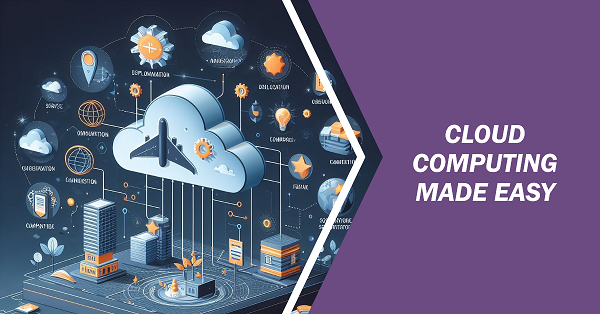In the fast-paced world of modern business, staying competitive often hinges on leveraging the latest technologies. One such technology that has revolutionized the way businesses operate is cloud computing. By moving computing resources off-site and accessing them via the internet, companies can scale their operations more efficiently, reduce costs, and increase flexibility. However, implementing cloud computing requires careful planning and execution. In this step-by-step guide, we’ll walk you through the process of integrating cloud computing into your business operations.
Step 1: Assess Your Needs and Goals
Before diving into cloud adoption, it’s crucial to understand your organization’s specific requirements and objectives. Consider factors such as the current IT infrastructure, business workflows, security concerns, and budget constraints. Identify areas where cloud computing can bring the most significant benefits, whether it’s enhancing collaboration among remote teams, improving data accessibility, or reducing operational expenses.
Example: A retail company aims to streamline its inventory management process and improve customer service by implementing cloud-based point-of-sale (POS) and customer relationship management (CRM) systems.
Step 2: Choose the Right Cloud Service Model
Cloud computing offers various service models, including Infrastructure as a Service (IaaS), Platform as a Service (PaaS), and Software as a Service (SaaS). Determine which model aligns best with your business objectives and resources. IaaS provides fundamental computing resources like virtual machines and storage, while PaaS offers development tools and frameworks. SaaS delivers ready-to-use software applications hosted in the cloud.
Example: The retail company opts for a SaaS solution for its POS and CRM needs, selecting a cloud-based inventory management platform that integrates seamlessly with its existing systems.
Step 3: Select a Suitable Cloud Deployment Model
Cloud services can be deployed in different ways, including public, private, hybrid, and multicloud environments. Public clouds are managed by third-party providers and offer scalability and cost-effectiveness. Private clouds provide dedicated resources for enhanced security and control. Hybrid and multicloud strategies combine elements of both public and private clouds to optimize performance and flexibility.
Example: The retail company chooses a public cloud deployment for its SaaS applications to take advantage of scalability and cost savings, while maintaining sensitive data on a private cloud for added security and compliance.
Step 4: Evaluate Cloud Providers
Research and compare various cloud providers based on factors such as reliability, performance, security features, pricing, and customer support. Consider industry certifications and compliance standards relevant to your business. Look for providers with a track record of serving businesses similar to yours and offering solutions tailored to your specific needs.
Example: After thorough evaluation, the retail company selects a reputable cloud provider known for its robust security measures, reliability, and responsive customer service.
Step 5: Plan Migration Strategy and Execution
Develop a comprehensive migration plan outlining the steps involved, timeline, potential risks, and mitigation strategies. Prioritize workloads and data for migration based on their criticality and complexity. Consider conducting a pilot migration to test the process and identify any issues before migrating production environments. Communicate with stakeholders and provide training to ensure a smooth transition to the cloud.
Example: The retail company schedules migration of its POS and CRM systems during off-peak hours to minimize disruption to operations. Training sessions are organized for staff to familiarize them with the new cloud-based tools.
Step 6: Monitor and Optimize Performance
Once your systems are up and running in the cloud, continuously monitor performance metrics such as uptime, response times, and resource utilization. Implement automated scaling and optimization techniques to ensure efficient use of resources and cost-effectiveness. Regularly review your cloud infrastructure and make adjustments as needed to align with evolving business requirements.
Example: The retail company utilizes monitoring tools provided by its cloud provider to track system performance in real-time and adjust resource allocation dynamically based on demand fluctuations.
Conclusion
By following these steps, businesses can successfully implement cloud computing to drive innovation, improve agility, and gain a competitive edge in today’s digital landscape. However, it’s essential to approach cloud adoption strategically, considering the unique needs and objectives of your organization. With careful planning and execution, cloud computing can empower businesses to thrive in an increasingly interconnected world.

Very bad
Good
Goood
Good
Good